The healing potential of mushrooms has been discussed for centuries. Medicinal mushrooms have been used in folk medicine using mushrooms as a therapy for general health and wellbeing. Today, they're used in clinical applications for everything from gut health to cancer care.
Medicinal mushrooms have long been regarded as protectors of the human body and mind.
If you’re considering introducing medicinal mushrooms into your personal health regimen, but aren't sure where to start, you’ve come to the right place!
Here at Remeday, our goal is to provide unbiased research and thoughts on how to incorporate medicinal mushrooms into your everyday life.
In this article, we’ll discuss everything from the history of medicinal mushrooms to how they’ve been used, the potential benefits, and more.
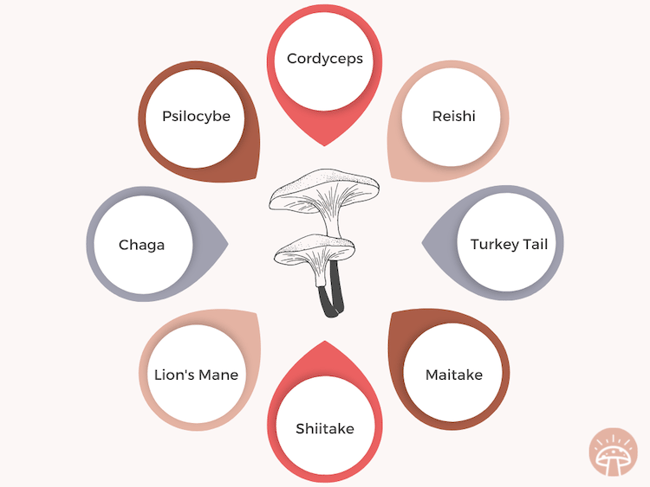
First, let’s quickly cover what medicinal mushrooms are:
What are medicinal mushrooms?
Medicinal mushrooms are specific mushroom species that are believed to have functional or medicinal value when extracted or consumed. There are numerous types of medicinal mushrooms, but some of the most commonly known species are:
- Cordyceps
- Lion’s mane
- Chaga
- Reishi
- Maitake
- Turkey tail
- Oyster
- Shiitake
- Psilocybe (magic)
Each mushroom species has a dense makeup of different nutrients, minerals, proteins, and other healing compounds.
These nutrients, mixed with bioactive compounds, enable mushrooms to be used to support health and wellbeing.
Most people are familiar with mushrooms as a food item they can pick up in the produce section of the local grocery store - and they’re not wrong! But many aren’t aware of the nutritional and medicinal qualities that certain mushrooms can provide to human beings.
When we start to think about mushrooms as both food and a potential health supplement is when we shift into the world of medicinal mushrooms.
It’s important to note that medicinal mushrooms are not a miracle cure for any health ailment. But rather, they represent a vital part of a complete health program. Please consider this when deciding if medicinal mushroom use is right for you. You should always consult with your doctor and pharmacist before incorporating medicinal mushrooms into your health or treatment plan.
Now that we have a basis of what we’re discussing when we say “medicinal mushrooms”, there’s so mush more to discuss, so here goes.
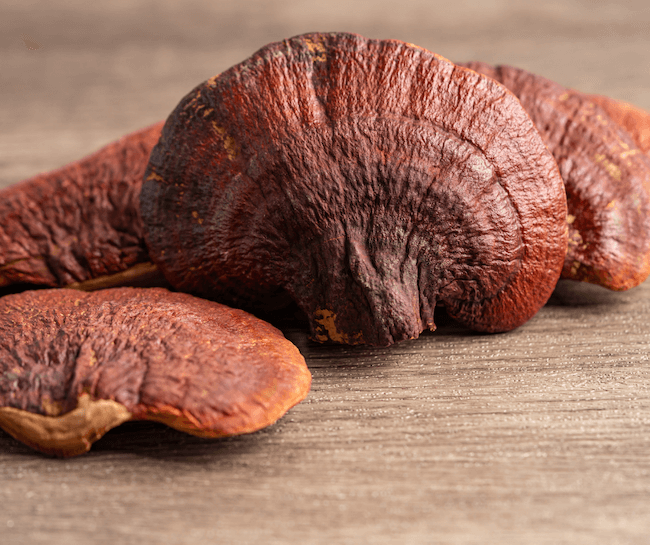
Reishi Mushroom
A quick history of medicinal mushrooms
Our ancestors have used medicinal mushrooms for hundreds, maybe thousands, of years to care for human health. First notes of mushroom use for healthcare date back to 450 bce when Hippocrates classified the amadou mushroom (Fomes fomentarius) as both an anti-inflammatory treatment and a potential help with cauterizing opening wounds.
The first people to inhabit North America also used puffball mushrooms (Calvatia genus) for wound care.
However, the most thorough and long held documentation on mushrooms for medicinal use has been done by Eastern countries (e.g., China, Japan, various European countries, Serbia, and Russia).
Medicinal mushrooms in Eastern medicine
Various Eastern cultures have always believed that mushrooms have exceptional healing powers for cardiovascular needs, mental wellbeing, and cancer prevention or treatment. The Chinese in particular have used medicinal mushrooms in both folk and traditional medicine for over 2000 years.
In fact, China’s long-term use of mushrooms may show why the country is responsible for nearly 75-85% of all mushroom cultivation worldwide.
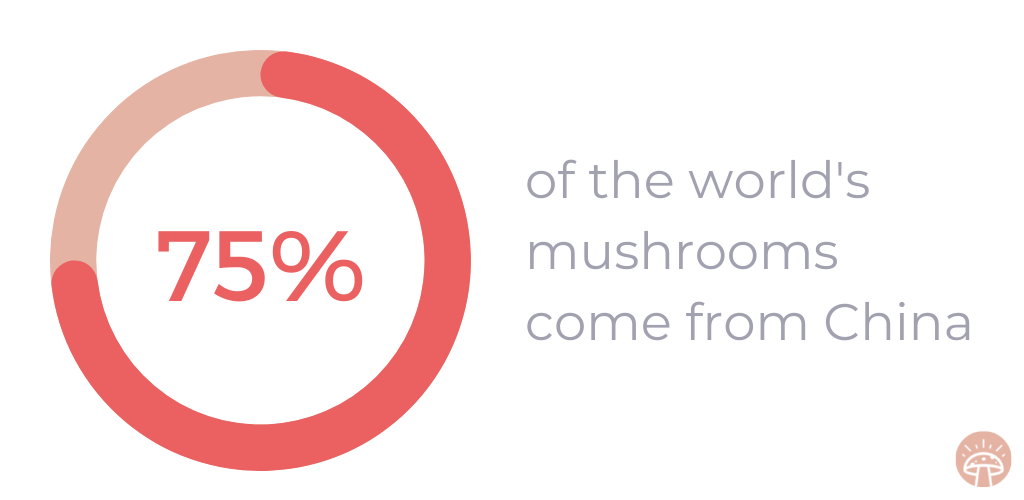
As an example of this usage, reishi mushrooms have been used by Asian countries to treat infections for a long time.
Learn more about mushrooms from China (and whether they're safe) here.
For the past 30 years in particular, mushrooms have been approved by governing bodies for treatment of various cancers alongside chemotherapy or radiation.
The difference between medicinal, magic, and gourmet mushrooms
A common question by those who are just diving into the world of fungi is: what are the differences between medicinal mushrooms, magic mushrooms, and gourmet mushrooms? While all mushrooms can be foraged from the wild, not all mushrooms have the same use or affect. In this section, we’ll give a high-level outline on what the differences are between these three use applications.
|
Gourmet |
Medicinal |
Magic |
|
Typically harvested for their amazing flavor and added to gourmet food dishes |
Typically harvested for their potential applications for health and wellbeing. For the past 30 years, some mushrooms have been studied as potential treatments for cancer. |
Typically harvested to have psychedelic experiences or, more recently, utilized for mental health applications in a professional setting. |
|
Includes: oyster, portobello, shiitake, white button, chestnut, porcini, cremini, and more |
Includes: reishi, turkey tail, lion’s mane, shiitake, cordyceps, maitake, and more |
Includes: psilocybe cubensis, azurescens, and semilanceata varieties. |
|
Non-psychedelic |
Non-psychedelic |
Psychedelic |
Gourmet mushrooms
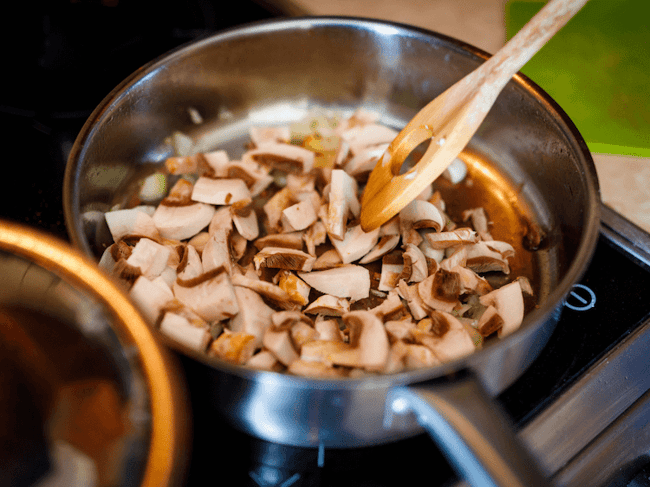
Fresh mushrooms (a.k.a. gourmet mushrooms) can be foraged from the wild or, more simply, purchased from your local grocery store. When most people think about gourmet mushrooms, their mind goes to oyster, portobello, or shiitake mushrooms.
While gourmet mushrooms are a great addition to meals, they’re typically not cooked at a high enough temperature, or broken down thoroughly enough (e.g., ground down) to release the active compounds needed to boost health or treat common health ailments.
Medicinal mushrooms
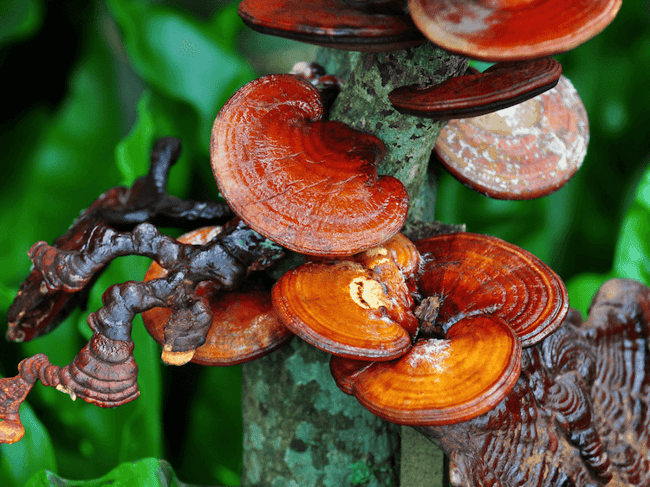
Medicinal mushrooms aren’t fully medicinal unless their compounds are present and bioavailable. To put it in simpler terms, medicinal mushrooms aren’t truly medicinal until the cell walls of the mushroom have been heated to the point that active compounds (like beta-glucans and chitin) are released, allowing the person consuming them to reap the benefits of those nutrients.
Commonly used medicinal mushroom species include reishi, turkey tail, and chaga, to name a few. They are commonly known to help with general health and wellbeing, but more specifically cancer treatment, immunotherapy, and more.
Medicinal mushrooms can be made into, or purchased in, a variety of formats including tincture, extract, capsules, and powders. We’ll get to that at the end of this article.
Magic mushrooms
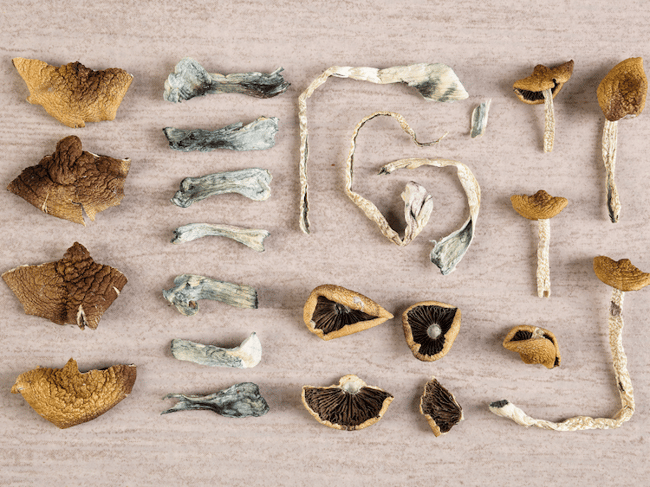
Magic mushrooms have long been regarded for their visionary capabilities as a way to break down ego and access higher levels of spiritual awareness. In fact, magic mushrooms have been used for over 3,500 years. However, on this article’s publish date, the US government still mostly considers psychedelic (magic) mushrooms as a schedule 1 drug alongside LSD and heroin.
While there are a few types of magic mushroom species, psilocybin and psilocin are the compounds that have been identified in all or most to give the hallucinogenic effect.
Beyond being used to tap into one’s personal spiritual journey or life purpose, psilocybin has been used, and is still being used, in numerous clinical studies to treat:
- Behavioral disorders
- Cancer-related anxiety and depression
- Depression
- Addiction
- Cluster headaches
- Neurogenesis
Research on magic mushrooms is still being done and, until we know the safety and efficacy, they cannot be recommended for common use. Please also note that psilocybin use is criminalized in most states.
What are some of the potential benefits of medicinal mushrooms?
Since the early days of medicinal mushroom use, interest has grown on the subject and numerous research studies have been conducted to validate the beliefs of traditional Chinese medicine. In this research, over 270 recognized types of mushrooms have been studied and are now known to have immunotherapeutic properties.
Today, medicinal mushrooms are believed to have a multitude of potential benefits that span:
- Cancer
- Arthritis
- Anxiety
- Cognition
- Inflammation
- Blood sugar
- Blood pressure
- Aging
- Cholesterol
- Energy
Each type of medicinal mushroom has its own healing properties and doing research on which type is right for your own needs is important before diving in. With that, we expect you’re now asking…
What are the top seven medicinal mushrooms?
The top seven most widely used and well-known medicinal mushrooms include:
1. Chaga
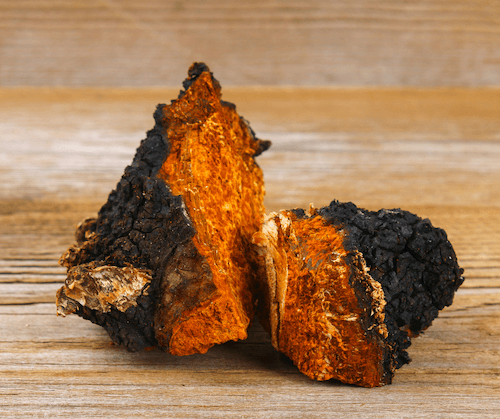
Chaga, while considered an “ugly” mushroom from an aesthetic perspective, is often referred to as one of the best medicinal mushrooms for overall health and wellness. Chaga grows on birch trees and resembles a lump of burnt charcoal. However, it has a soft orange center and is filled with antioxidants and nutrients.
The potential benefits of chaga mushrooms are:
- Anti-aging
- Healthy skin
- Immunotherapy
- Antioxidant boost
- Anti-inflammatory
- Blood sugar balancing
- Antitumor activity for various cancers
- Antiviral
For more information on chaga mushroom health benefits, check out this article.
2. Cordyceps
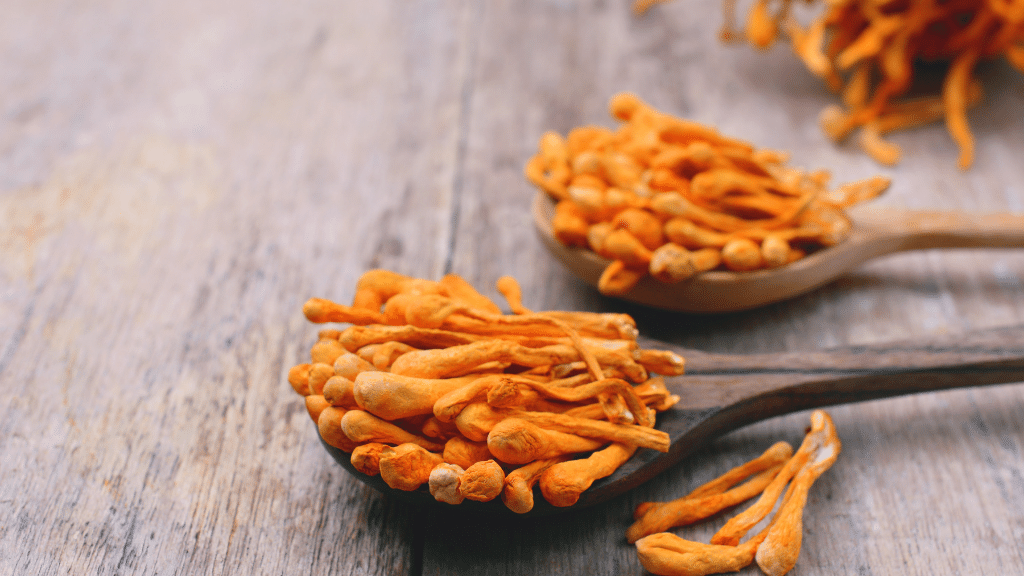
Cordyceps appear as a long, orangey colored stem that resembles shaved carrots. This mushroom is widely utilized to help with energy and athletic performance, improve kidney function, and slow disease.
Further potential benefits of consuming cordyceps include:
- Fight fatigue
- Sexual performance
- Improved lung function
Learn more about the potential health benefits of cordyceps mushrooms here.
3. Lion’s mane
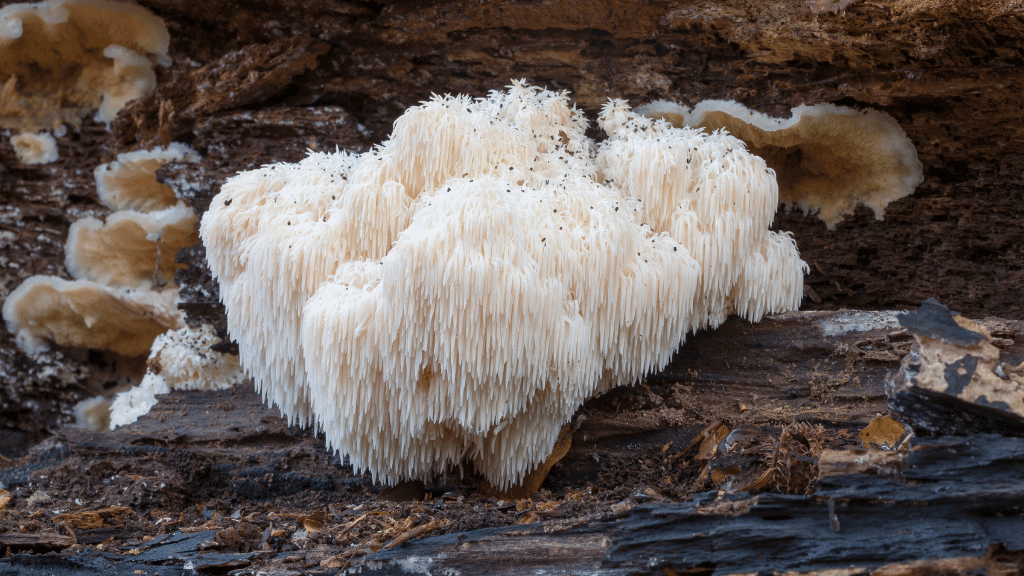
Considered one of the more beautiful mushrooms and very easy to identify in the wild, lion’s mane has a shaggy white exterior that resembles a sea anemone or coral.
It is most known to help with:
- Mental Clarity
- Memory Improvement
- Strengthen Concentration
- Improve Cognitive Function
- Mood Regulating
- Nerve Support and Repair
- Digestive/Gut Health
- Anti-Inflammatory
- Antioxidant
Check out our article on the potential health benefits of lion's mane here.
4. Maitake
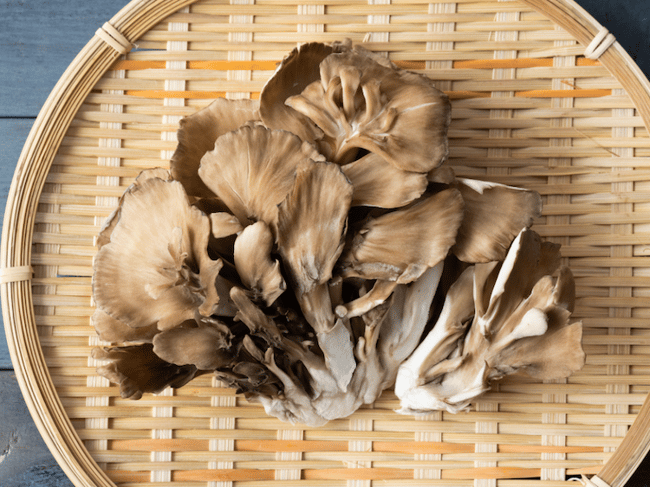
The maitake mushroom, named “dancing mushroom” by the Japanese, is classified by its cluster of brown caps and is widely considered delicious in flavor and texture (unlike most medicinal mushrooms). In traditional Chinese medicine, it’s been used for lung, liver, and digestive system support.
Potential benefits of consuming maitake mushrooms include:
- Cancer Prevention/Treatment
- Treating Infections
- Upper Respiratory Health
- Digestive Health
- Immune Support
- Antiviral
- Antioxidant
For more information on maitake mushroom health benefits, check out this section.
5. Reishi
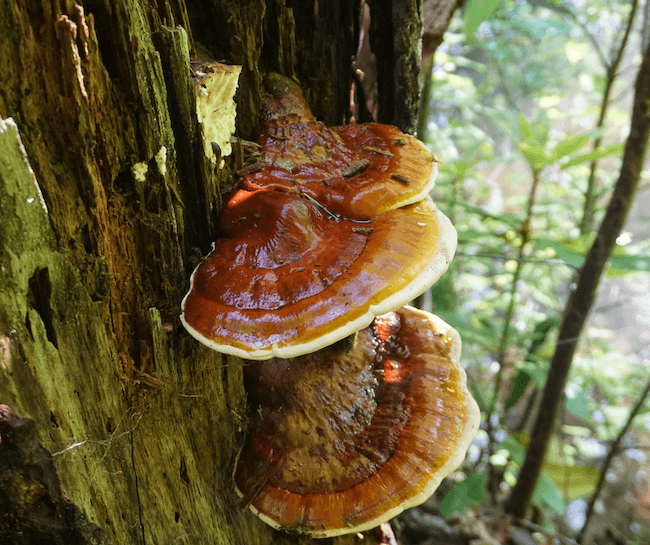
Ahh reishi, the most “famous” of all the medicinal mushrooms, has been nicknamed the Queen of Mushrooms for its long held use (over 2000 years!) Reishi has a shiny exterior and comes with either an orange, yellow, red, or black colored cap. is cultivated all over the world for its functional health applications.
Some of the potential benefits of reishi include:
- Immune Booster
- Heart Health
- Protects the Liver
- Relieves Stress/Anxiety
- Improves Cognition
- Lung/Respiratory Health
- Reduces Inflammation
- Relieves Pain
- Improve Sleep
- Calm Mind/Body
For more information on reishi mushroom health benefits, check out this article.
6. Shiitake
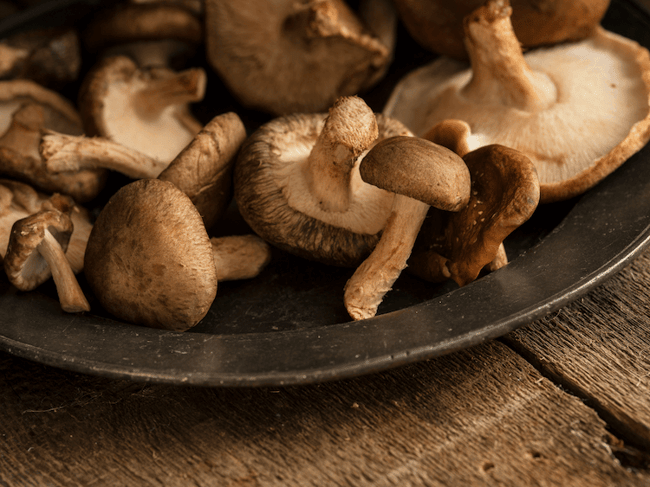
Shiitake mushrooms, a common household food item, are the second most widely cultivated mushroom in the world behind the button mushroom because of it’s delicious taste and fine texture. Shiitake mushrooms resemble button mushrooms in some ways, but have a wider cap and color differentiation. It’s said that eating two or three shiitake fruiting bodies a week can help the immune system.
Potential benefits of shiitake include:
- Immune Support
- Anti-Cancer Properties
- Blood Sugar Regulation
- Prevention of Infections
- Anti-Microbial
- Liver Health
For more information on shiitake mushroom health benefits, check out this section.
7. Turkey tail
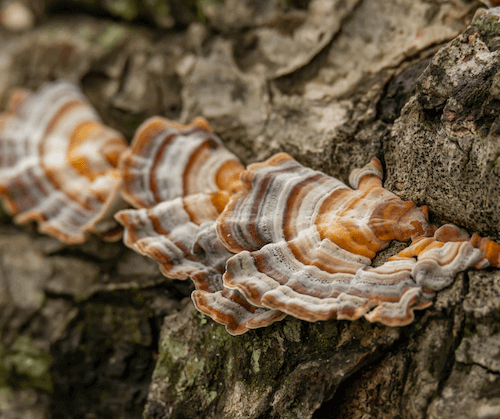
Last, but certainly not least, we have the turkey tail mushroom - one of the most widely researched medicinal mushrooms with an array of potential health benefits. Turkey tail is named because it literally resembles a fanned turkey’s tail when growing on tree trunks. The beta-glucans in turkey tail mushrooms have been studied in human clinical trials, most notably for their effects on our immune system and its action against cancer, tumors, and viruses.
Research has linked turkey tail usage to:
- Cancer Prevention/Treatment
- Treating Infections
- Upper Respiratory Health
- Digestive Health
- Immune Support
- Antiviral
- Antioxidant
For more information on turkey tail mushroom health benefits, check out this article.
Curious to learn more about the top seven types of medicinal mushrooms? We have a handy e-book that covers what they’re used for, dosage, and more.
Now that we’ve covered the top medicinal mushrooms seen on the market today, let’s dive into the compounds that make these mushrooms so popular.
What makes mushrooms medicinal?
In addition to their dense nutritional makeup, medicinal mushrooms get their powers from active compounds like beta-glucans and terpenoids. We are still learning about all of the secrets medicinal mushrooms hold. But here are some of the most popular active compounds you'll see in studies:
1. Fungal beta-glucans
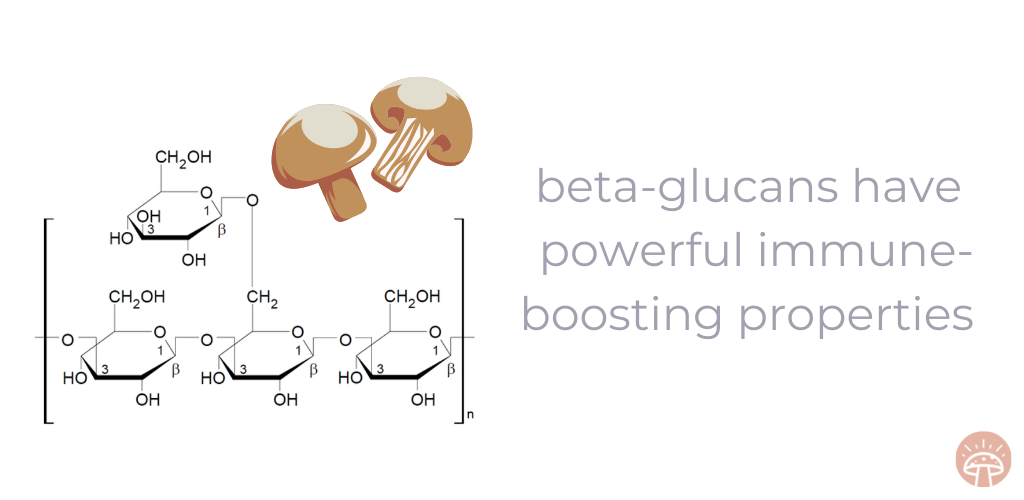
Beta-glucans are a commonly referred term in the mushroom world. Mushroom cell walls have been proven to contain beta-glucans that help both regulate and boost the immune system.
But what are they?
In short, beta-glucans are soluble fibers that, in this case, come from the cell walls in fungi/mushrooms. Fungal beta-glucans can have an extremely positive impact on the immune system, which is why each product you buy should list the percentage of them. This is especially true for reishi, turkey tail, and any mushroom variety for which you’re looking to get specific immune benefits from.
Learn more about beta-glucans with this guide (that doesn't require a medical degree to read.)
Beta-glucans have been studied for their potential applications for cancer treatment as well as the prevention and treatment of viral and bacterial infections.
There is an uptick in interest in the science community about how fungal beta-glucans can be applied due to they’re immune boosting properties. It’s one of the primary reasons that mushrooms get the credit that they deserve as being health supplements that consumers may want to add into their daily routine.
How to access beta-glucans in your medicinal mushrooms:
Fungal beta-glucans are water soluble and heat activated. That’s why so many medicinal mushrooms are consumed as a tea. Hot water helps to break down the tough mushroom walls so that the beta-glucans are more bioavailable to our bodies.
While product recommendations vary, in general, you should look for a fruiting body hot water extraction if you’re looking for the highest amount of beta-glucan content.
2. Terpenoids
Terpenoids are a bioactive compound found in many mushrooms and plants. You’ll see it used widely when you start to research medicinal mushrooms.
Terpenes and terpenoids have been widely studied for their therapeutic and potential medicinal benefits. Each plant produces different terpenes. Think about hemp or even lavender - the aromatic compounds in these that have been used to help support relaxation, and other benefits, are made up of terpenoids.

The most well-studied ones in mushrooms are diterpenes in lion’s mane and triterpenoids in reishi.
- The diterpenes found in lion’s mane mushrooms have been studied by various scientists, and found that, because of these compounds, the mushroom has the potential to treat neurodegenerative diseases (e.g., Alzheimers disease).
- As for reishi mushrooms, they contain group of triterpenoids called ganoderic acids that resemble the molecular structure of some steroid treatments - this is what may make them a good potential treatment for cancer-related tumors.
It is important to check your product (especially lion’s mane and reishi) for the presence of terpenoids, which may be listed as a percentage alongside beta-glucans.
How to access terpenoids in your medicinal mushrooms:
Fungal terpenes and terpenoids are alcohol soluable, which means the application of alcohol helps to break down the tough mushroom exterior to make these compounds more bioavailable.
While product recommendations vary, in general, when buying lion’s mane or reishi you should look for a fruting body dual-extraction (utilizes both hot water and alcohol extraction methods) if you’re looking for the highest amount of beta-glucan AND terpenoid content.
3. D-Fraction (maitake)
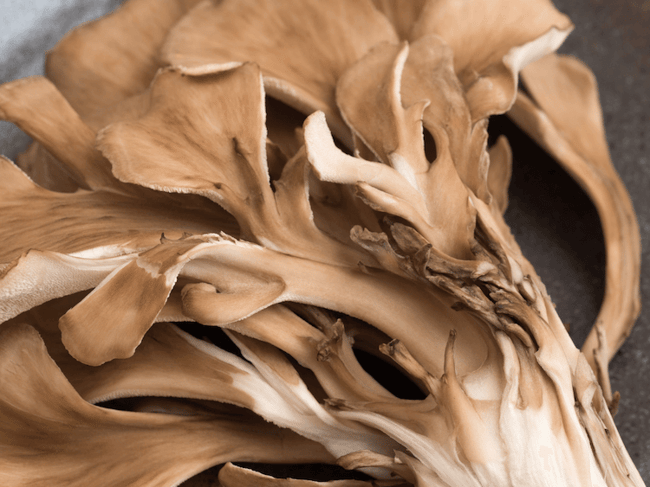
D-fraction is an active form of beta-glucans (sometimes called beta-D-glucans) that is extracted from the fruiting body maitake mushrooms. Maitake D-fraction that has been intensively researched as a concentrate to increase the potency of immunomodulation and anticancer effects.
It’s been reported that D-Fraction aids in anti-tumor cancer treatment or prevention.
In fact, maitake mushroom powder showed 86% tumor inhibition in various studies.
However, it’s important to note that most studies have been done on mice or in-vitro, and only serve as a starting point for human clinical studies for antitumor/anticancer treatments.
How to access maitake d-fraction in your maitake:
Matitake d-fraction fungal beta-glucans are water soluble and heat activated. Many studies have only used dried maitake mushroom powder. But using a hot water extraction may make the beta-D-glucans more bioavailable to you.
While product recommendations vary, in general, when buying maitake you should look for a fruiting body hot water extraction if you’re looking for the highest amount of beta-D-glucan content.
We put together a guide on maitake d-fraction here. Check it out!
4. Cordycepin (cordyceps)
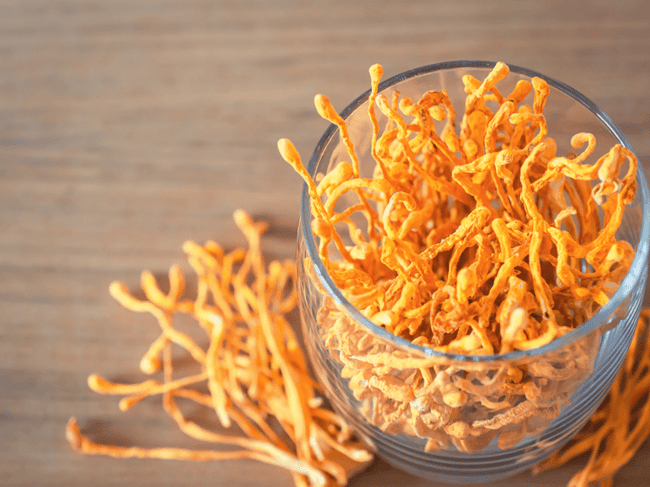
Cordycepin is a chemical compound (bioactive nucleoside) derived from the cordyceps mushroom species. Similar to D-Fraction, cordycepin is often studied as a potential antitumor/anticancer treatment.
“Cordycepin was first isolated from a culture broth of C. militaris in the 1950s. Since then, many biological and pharmacological functions of cordycepin, including anti-virus, anti-cancer, anti-diabetic, anti-inflammatory, renoprotective and immunomodulatory activities have been discovered.” SOURCE
How to access cordycepin in your cordyceps:
One study suggests that the best way to obtain the benefit of cordycepin is through ethanol alcohol extraction. This particular studied showed that a 60% alcohol percentage was ideal for the most beneficial compounds.
While product recommendations vary, in general, when buying cordyceps you should look for a fruting body alcohol extraction (not to exceed 70% alcohol) if you’re looking for the highest amount of cordycepin content.
Sterols
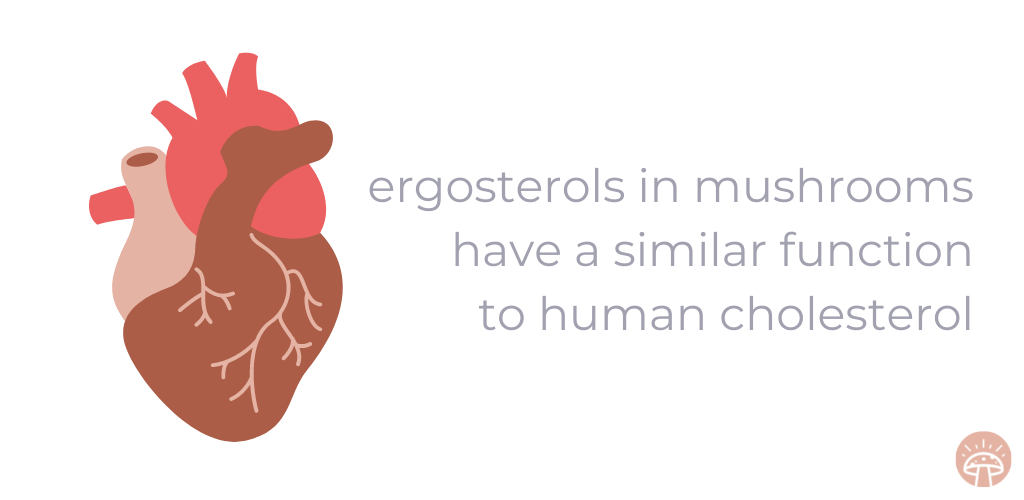
Sterols, a group of naturally occurring unsaturated steroid alcohols, help regulate the process of development by signaling cells. Sterols occur in major organisms from fungi to humans, and have been shown to reduce inflammation in the body.
One study was able to extract ergosterol and ergosterol peroxide from H. aurantiaca, commonly known as false chanterelles, with an optimized solvent system of toluene/ethyl acetate (3:1).
Medicinal mushroom powder vs extract
Curious what the difference is between mushroom powder and extract?
First, we need to understand the difference between nutritional value and functional value.
|
Mushroom Nutrition |
Functional Applications |
|
Ideal for nutritional value: you want more of the natural food benefits of eating more mushrooms. |
Ideal for using mushrooms for medicinal applications such as treatment of a specific ailment or general health and wellbeing |
|
Includes: high fiber, vitamin, mineral, and protein content |
Includes: beta-glucans, terpene/terpenoids, and more. |
|
You would want to choose whole mushrooms or raw mushroom powder |
You would want to choose mushroom extract |
Medicinal mushroom powder is usually derived from whole mushrooms that have been dried and then ground into a powder for easy consumption. Some mushroom powders include both the fruiting body (cap) and mycelium.
Mushroom powder is generally regarded as the easiest way to reap the nutritional benefits of a medicinal mushroom. Or if you just want to incorporate more mushrooms into your diet.
However, the medicinal properties are not fully bioavailable due to the body’s inability to digest chitin that exists in the exterior of the mushroom.
Medicinal mushroom extract is created using hot water or alcohol extraction (or sometimes both for dual extraction) to concentrate the medicinal compounds from the mushroom. The extraction process makes the medicinal compounds easier for our bodies to access.
Extracts are generally accepted as the best way to get the medicinal benefits of mushrooms. Learn about mushroom extraction here.
Which is better for you?
Studies have been completed on both mushroom powder and mushroom extract with promising results. However, it’s generally accepted that processing through hot water and/or alcohol releases more medicinal compounds. The answer to this really depends on what your personal use case or need is. Always ask your doctor before incorporating a medicinal mushroom into your daily routine.
Now that we’ve covered these two product types, we’ll dive into the…
Four ways to take medicinal mushrooms
There are many ways you can incorporate medicinal mushrooms into your daily routine. Remember to talk to your doctor about which method and dosage is best for your unique situation. Many people choose to consume mushrooms in cooking, as powder, extract, tincture, or in a capsule form.
1. Mushroom powder
Mushroom powder is considered the easiest way to get the nutrients from a medicinal mushroom, but is not considered the best consumable product to get medicinal compounds in the body. Mushroom powder is simply fruiting bodies (and sometimes mycelium) that have been dried ground down to be used as an additive to cooking or as a tea. We recommend steeping your mushroom powder in hot water for 10-15 minutes to get the most medicinal value.
2. Powder extract
As mentioned in the section prior, people have been using mushroom powder for generations. A powder extract product is created by grinding down mushrooms to create a powder, boiling the powder at a very high heat to create an extract, and then using a spray dryer to return it to powder format.
By following this process, it’s perceived that the product will have a greater bioavailability of fungal beta-glucans. Look for the words “powder extract” on your product if this is what you’d like. This powder extract can be mixed into drinks or common food items - but please read the label for appropriate dosage.
3. Tincture
Tinctures - sometimes called liquid extracts - are a popular way to take medicinal mushrooms. Consuming either a water or alcohol-based extract should have positive health benefits. Dual extraction (both water and alcohol) products are arguably the best tinctures to consume. For more dual extraction products, simply add 2 milliliters of your liquid extract (e.g., half an eye dropper) to coffee, tea, water, or a smoothie. Please note that serving size will vary based on mushroom species and product.
We put together a list of the best tincture brands here.
4. Capsule
Arguably the easiest way to consume medicinal mushroom powder is with capsuled supplements. The capsules contain the extract powder and can be taken as any daily supplement alongside water or your drink of choice.
Here's our list of the best mushroom capsule brands.
5. In gourmet dishes
Love to cook and love the taste of mushrooms? Then incorporating more mushrooms into your diet could be the right fit for you! Lions mane, shiitake, and maitake are common mushrooms to use in gourmet dishes. Use them in soups, stir frys, and more. Remember, that mushrooms need water and high heat in order to extract more beta-glucans. Gourmet dishes may not give you the volume of mushrooms you need to see medicinal value. But they're great option for nutritional purposes and everyday health.
Before consuming any medicinal mushroom supplement, please consult a trusted healthcare professional.
Whew, that was a lot, but we truly appreciate you sticking with us as you embark on your medicinal mushroom journey.
Want to learn more? Poke around our blog to discover different types of medicinal mushrooms, their use cases, details on health benefits and potential side effects, and more.
Mush love,
The Remeday Team

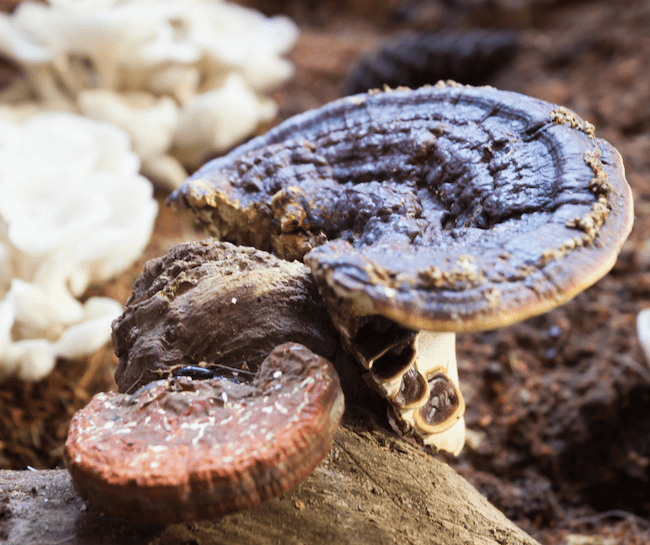
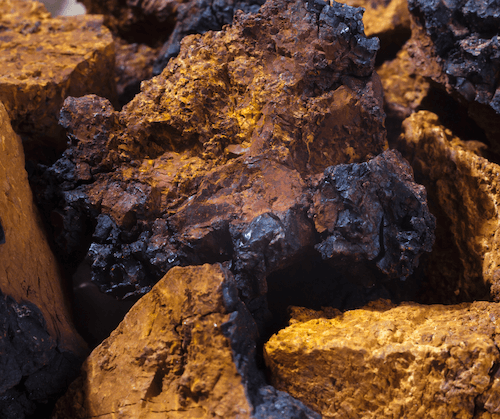


.png)
